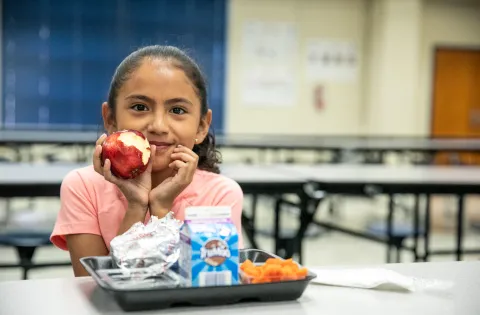Community Eligibility is a powerful tool to end childhood hunger.
Here are three things to know about the Community Eligibility Provision and how it helps hungry kids.
- Community Eligibility allows schools in high-poverty areas to reach more students with the nutrition they need by reducing administrative burden, increasing program efficiency and eliminating stigma. Instead of collecting paper applications from each student, eligible schools can offer meals at no cost to all students. This streamlines meal service for schools and removes the stigma from students of being singled out as poor, one of the key reasons why not all kids who qualify for free and reduced-price meals are getting them.
- Community Eligibility also means parents no longer have to complete meal applications when their circumstances change quickly. Many low-income families are living on the brink of hunger, just one unexpected expense away from being unable to feed their families. An emergency room visit or car repair can mean there’s no money left for groceries. School meal programs enable low-income parents to dedicate limited resources to other expenses like housing and healthcare.
- Most importantly, the program helps make sure that more of the kids who need school meals are getting them. When children get the food they need each day, they feel better, learn more and grow up stronger. Healthier, smarter kids are more likely to break the cycle of poverty and build a stronger, more competitive America. This is good for our kids, good for our communities, and good for our nation.



